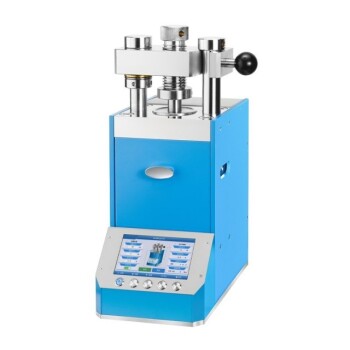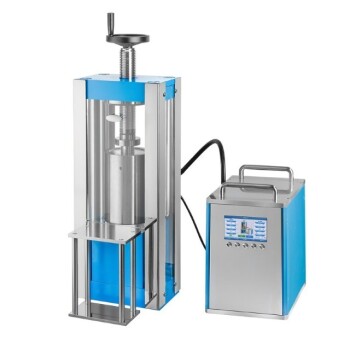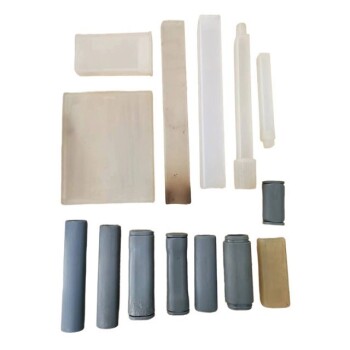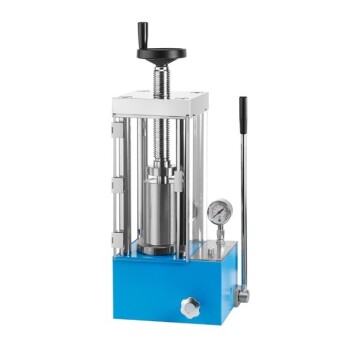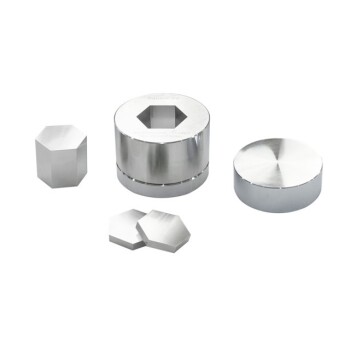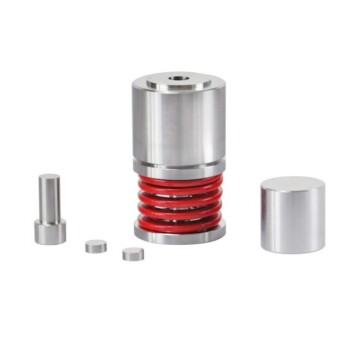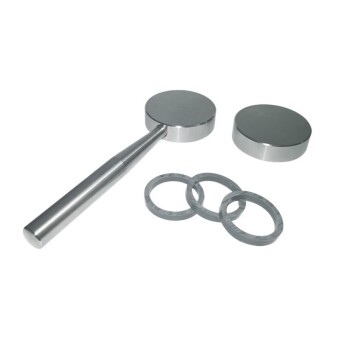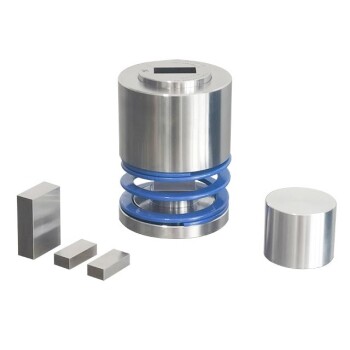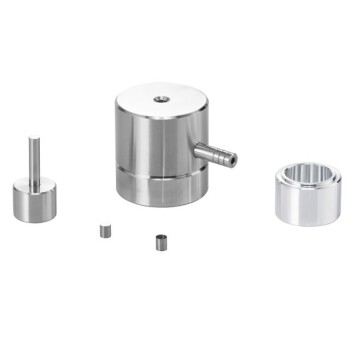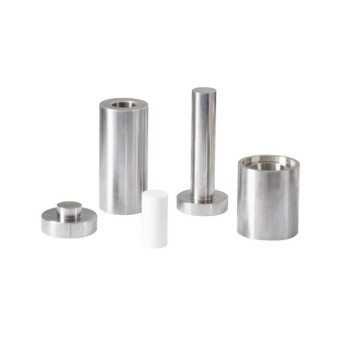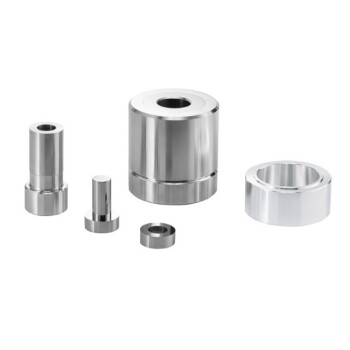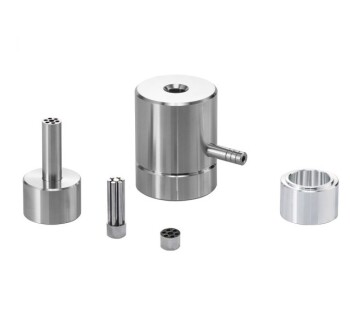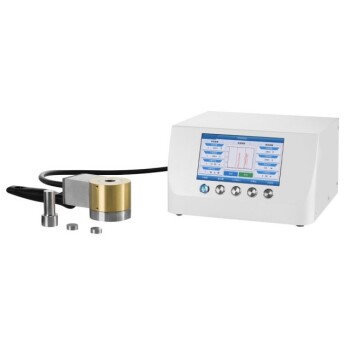At its core, Cold Isostatic Pressing (CIP) is a foundational process for large-volume manufacturing, particularly for components requiring high uniformity and material strength. It is most famously used to produce the ceramic insulators for spark plugs, with billions of units manufactured annually, demonstrating its capability to operate at an immense scale. CIP achieves this by compacting powders into a solid, uniform mass before the final heating (sintering) stage.
The central advantage of CIP in a high-volume setting is its ability to produce parts with exceptionally consistent density and shape, even for complex geometries. This uniformity minimizes defects and ensures predictable shrinkage during sintering, leading to higher yields and lower costs—critical factors in any large-scale production environment.
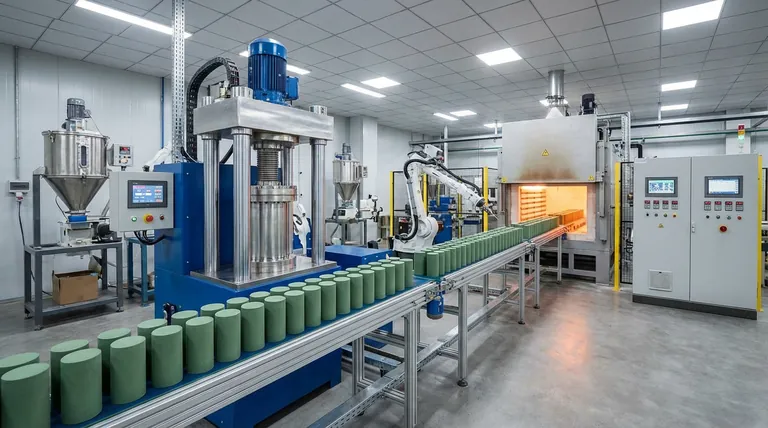
How CIP Achieves High-Volume Throughput
The effectiveness of CIP for mass production stems from its unique method of applying pressure and the high degree of automation that can be built around the process.
The Principle of Uniform Compression
Unlike uniaxial pressing, which compresses a powder from one or two directions, CIP applies equal pressure from all sides simultaneously. This is typically done using a liquid medium.
This isostatic pressure ensures that the powder compacts to a consistent density throughout the part. For large-volume production, this consistency is paramount because it leads to predictable, repeatable results from one part to the next, drastically reducing rejection rates.
Dry Bag vs. Wet Bag Tooling
CIP processes are broadly categorized into two types, with one being far more suitable for automation and speed.
- Wet Bag CIP: The powder is placed in a flexible mold, sealed, and then submerged in a pressure vessel. This is versatile but requires more manual handling, making it better for prototypes or smaller, more complex production runs.
- Dry Bag CIP: The flexible mold is an integrated part of the pressure vessel itself. Powder is loaded into the mold, the automated cycle runs, and the compacted part is ejected. This method is designed for high-speed, repetitive production and is the key to using CIP in large-volume applications.
The Impact of Automation: Electrical CIP
Modern, large-scale CIP operations rely on automated or "electrical" CIP systems. These systems integrate the entire process, from powder filling to part ejection, minimizing manual labor.
Automated systems offer precise control over pressure cycles and can achieve rapid pressure buildup and release. This significantly shortens the time required for each part, with some systems reducing forming time by 40% to 60% compared to manual methods.
Key Applications in Large-Scale Manufacturing
CIP is not a niche technology; it is a proven workhorse in several demanding industries where both quality and quantity are essential.
Ceramic Components and Insulators
This is the most prominent application. Alumina ceramics, used for spark plug insulators and other electrical insulation, are manufactured by the billion using automated dry bag CIP. The process ensures the high dielectric strength and mechanical durability required.
Powder Metallurgy and Automotive Parts
In powder metallurgy, CIP is used to form complex metal powder shapes, such as automotive engine components, before they are sintered. The process produces a high-density "green part" (an unsintered part).
This high green strength is critical, as it means the compacted part is robust enough to be handled by automated machinery on a production line without breaking before it reaches the sintering furnace.
Advanced Materials for Electronics
CIP is essential for manufacturing high-purity, high-density components for the electronics industry. A key example is producing sputtering targets, such as Indium Tin Oxide (ITO) ceramic targets used to create transparent conductive coatings on screens. CIP can achieve densities up to 95% of the theoretical maximum even before sintering.
Understanding the Core Advantages for Production
The technical features of CIP translate directly into tangible benefits for any large-scale manufacturing operation.
Unmatched Consistency and Quality
The uniform density provided by isostatic pressure ensures that every part has the same dimensional accuracy and material properties. This consistency simplifies and stabilizes subsequent processes like sintering, resulting in a higher-quality final product.
Reduced Material Waste
By compacting powders efficiently into a near-net shape, CIP minimizes the amount of raw material required and reduces the need for extensive post-sintering machining. This efficiency directly lowers production costs, a crucial factor at high volumes.
Suitability for Complex Geometries
Even at high speeds, dry bag CIP can produce parts with complex shapes, undercuts, and large aspect ratios (long and thin) that would be difficult or impossible to create with traditional die pressing. This expands the range of components that can be mass-produced efficiently.
Making the Right Choice for Your Goal
When evaluating CIP, your specific production objective will determine the best approach.
- If your primary focus is maximum throughput and automation: An automated, electrical Dry Bag CIP system is the definitive choice for high-volume, repetitive manufacturing.
- If your primary focus is producing a variety of complex parts in lower volumes: Wet Bag CIP offers greater flexibility for handling different shapes and sizes, though at a lower production speed.
- If your primary focus is improving a sintering process: CIP is an ideal pre-forming step to create high-quality, high-density green parts that will improve the efficiency and yield of your final sintering stage.
Cold Isostatic Pressing is a proven, reliable technology for achieving superior part quality and consistency at an industrial scale.
Summary Table:
| Feature | Benefit for Large-Volume Production |
|---|---|
| Uniform Isostatic Pressure | Ensures consistent density and shape, reducing defects and improving yield |
| Dry Bag CIP with Automation | Enables high-speed, repetitive production with minimal manual labor |
| High Green Strength | Allows automated handling before sintering, increasing throughput |
| Suitability for Complex Geometries | Expands range of mass-producible parts without compromising quality |
| Reduced Material Waste | Lowers costs by minimizing raw material use and post-processing needs |
Ready to enhance your production with reliable Cold Isostatic Pressing solutions? KINTEK specializes in lab press machines, including automatic lab presses, isostatic presses, and heated lab presses, tailored to meet the high-volume needs of industries like automotive and electronics. Our expertise ensures superior part quality, reduced waste, and increased efficiency for your laboratory. Contact us today to discuss how our CIP systems can optimize your manufacturing process!
Visual Guide
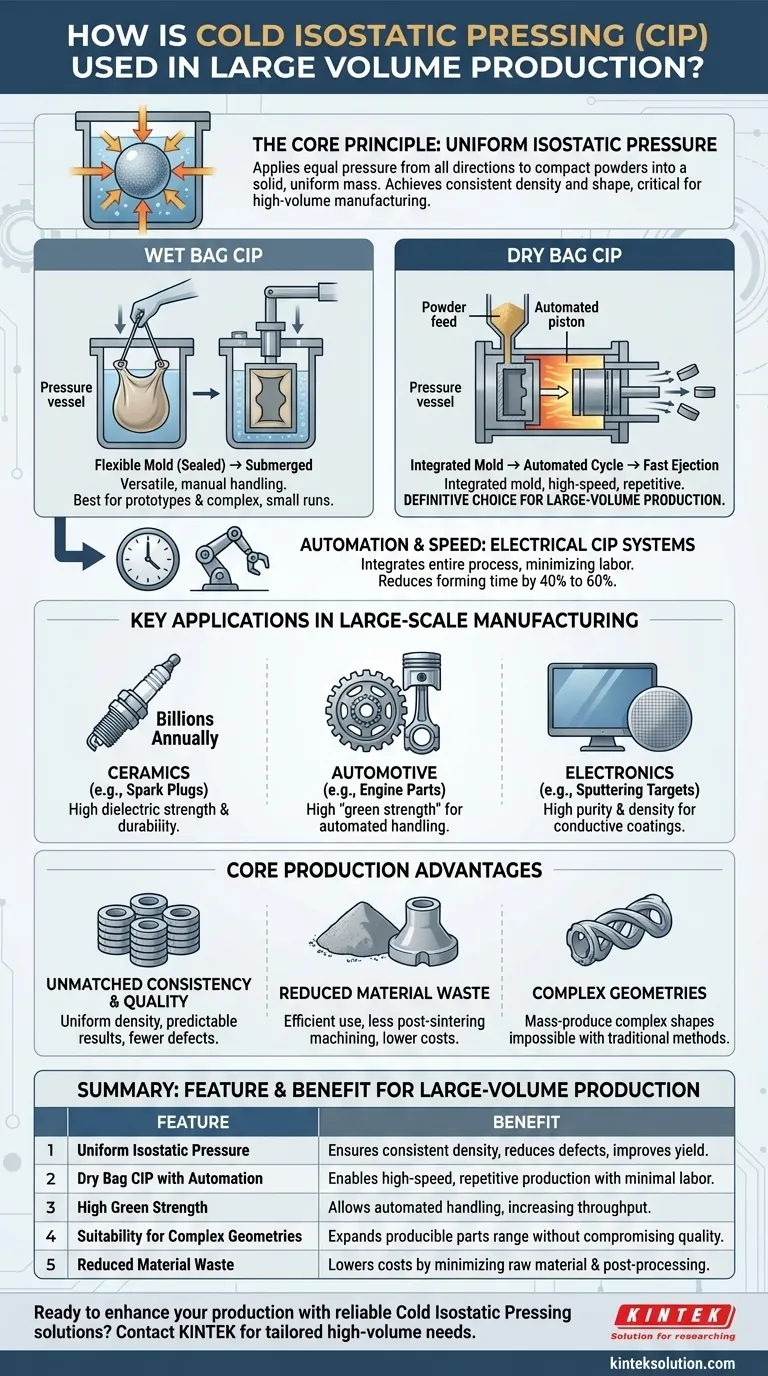
Related Products
- Automatic Lab Cold Isostatic Pressing CIP Machine
- Electric Split Lab Cold Isostatic Pressing CIP Machine
- Lab Isostatic Pressing Molds for Isostatic Molding
- Manual Cold Isostatic Pressing CIP Machine Pellet Press
- Lab Polygon Press Mold
People Also Ask
- What is the advantage of cold isostatic pressing in terms of controllability? Achieve Precise Material Properties with Uniform Pressure
- How can businesses optimize Cold Isostatic Pressing processes? Boost Quality and Cut Costs
- What role does CIP play in advanced technologies like solid-state batteries? Unlock High-Performance Energy Storage Solutions
- How does CIP compare to cold compaction in metal dies? Unlock Superior Performance in Metal Compaction
- How does cold isostatic pressing facilitate the manufacture of complex shaped parts? Achieve Uniform Density and Precision
